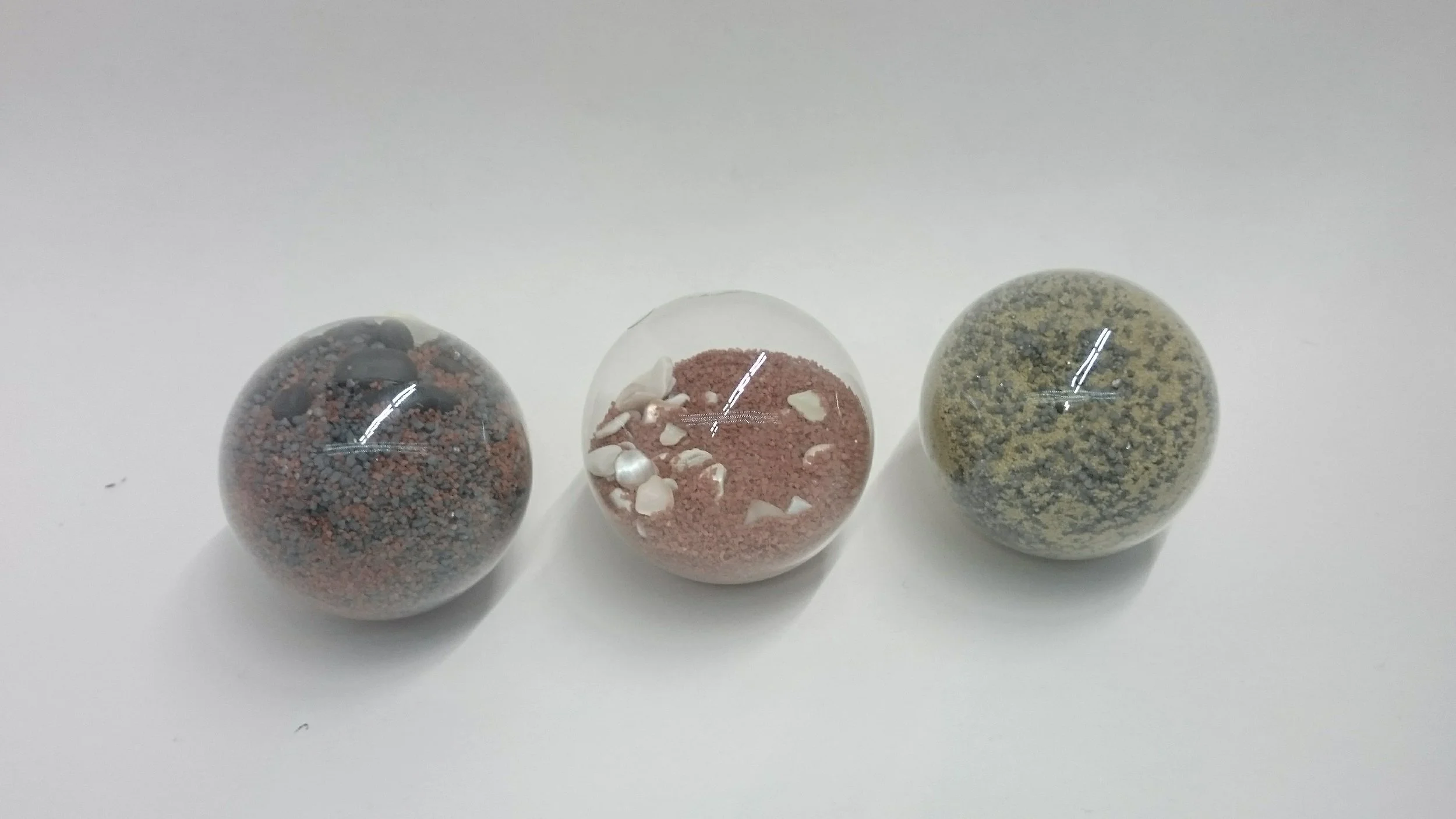The Vitruvian Globe
This project was a deep dive into user experience design. The Globe is a handheld desktop toy designed solely for play, and out of a group of four I was responsible for concept generation, user interviews, CAD modeling and drafting (outsourcing the humanoid to a partner for time considerations), and renderings.
Brainstorming
Thermochromic paint attempt
ideation
As a group, we wanted to build something from appearances seemed rather meaningless, but created a deep connection between user and object. After a period of brainstorming, we decided to go after a desktop toy with nested layers of interaction.
Initially this was to be embodied by an orb coated in thermochromic paint that would transition clear upon interaction, however we faced a host of problems with this approach. The texture was destroyed by the acrylic paint, the temperature change was insufficient to create a meaningful change. Users didn't like it, and neither did we.
We went through about five iterations refining the design from the initial prototype, and found that the most desirable features were an unassuming weight, a crisp roll experience, the glass texture, and multiple levels of interaction. We played with suspending an object inside the orb, and our users absolutely loved it, aside from two issues.
The interior object had only a single degree of freedom (rotation) and was suspended from an unsightly thread across the entire orb. I suggested incorporating the interesting geometry I had modeled in Solidworks and 3D printed with Formlabs (octet truss) that our users equally enjoyed.
All I needed to do was add another member inside the truss and print a toleranced humanoid (modeled by a group mate) for a loose "lego" like connection inside the truss, resulting in a suspended object with both translational (sliding along the bar) and rotational (around the bar) freedom.
Formlabs prototype
final prototype
Finally, we settled on a product incorporating both organic and geometric accents incorporated in such a manner to develop a thorough UX. The sand made a crisp sound rolling across the glass casing, it filtered through the octet lattice as the lattice turned within the globe, both causing the humanoid to dance across the sand and through free space.
Of course, a handheld globe would not be complete without an accompanying stand, the geometry of which was inspired by that of the octet lattice to maintain consistency. After a nice period of play, the user need only return the object to the stand and return to work, at least until a colleague asks if they can take a turn too.
For this iteration we used two pre-made plastic half domes, however the final design will be cast in glass, as we also developed a strategic partner with a local glass blower who will seamlessly seal the two glass domes to one another.
Product Render
Final Render
This render highlights the entirety of the product. To achieve this representation, I had to surface model the sand to give it the feel of flow, completed in Solidworks. After prepping all the components to be rendered, I brought it into KeyShot to apply textures, colors, and lighting to the model. I rendered from a number of different viewpoints and configurations, including alpha layers as necessary for their use case.
These visuals were powerful for our presentation and report, and are in my opinion the best way to communicate a product concept. The colors were specifically chosen to retain a neutral exterior while also bringing the user's eye inward to notice the humanoid inside.







